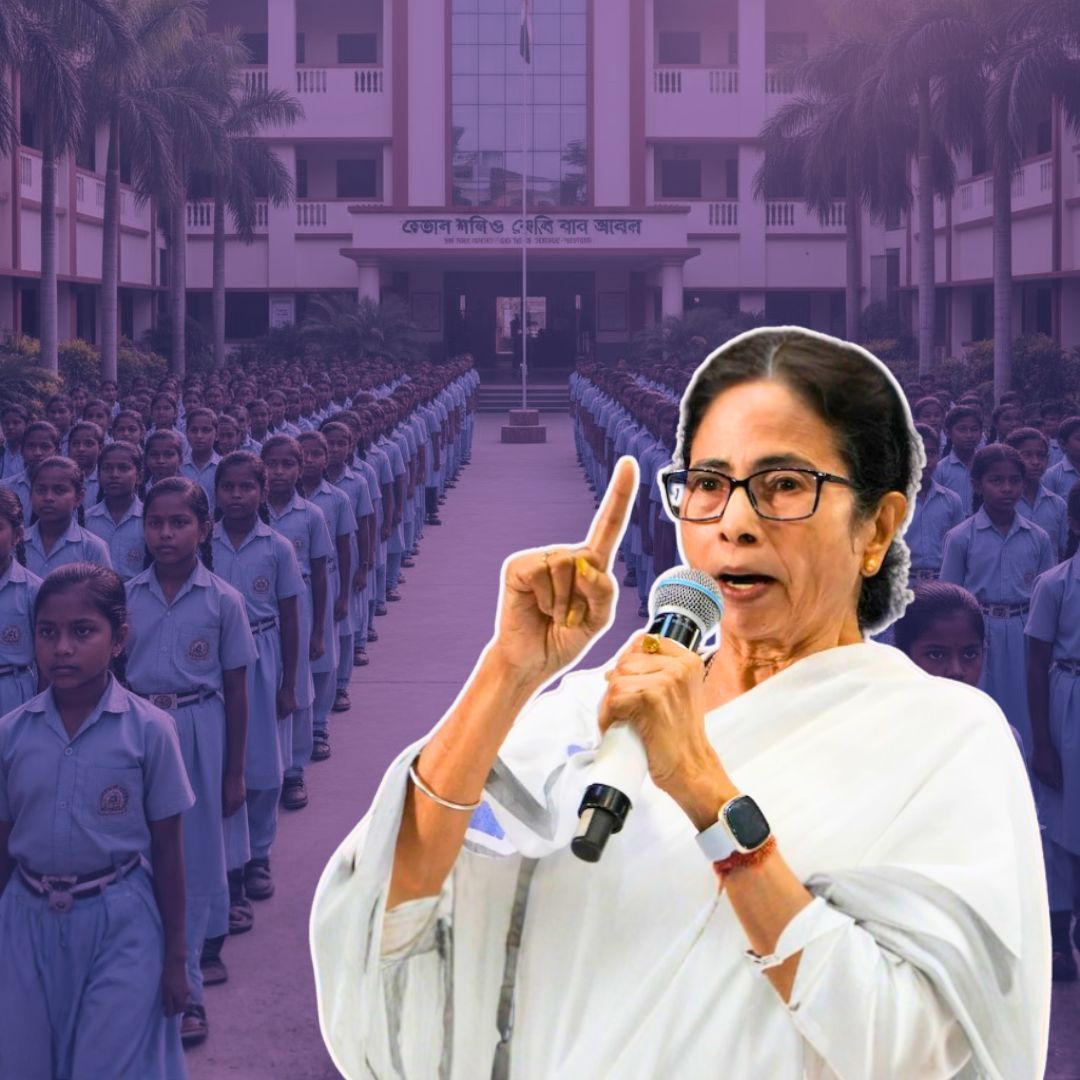The West Bengal government has mandated that all state-run and aided schools sing the state song “Banglar Mati, Banglar Jal” during their morning assemblies, alongside the national anthem.
This new directive aims to instill a sense of pride and unity rooted in Bengal’s rich cultural heritage among schoolchildren.
The decision, endorsed by Chief Minister Mamata Banerjee and communicated via the West Bengal Board of Secondary Education (WBBSE), marks a significant move in reaffirming Bengal’s identity in education.
Education Minister Bratya Basu announced the change on social media, emphasising daily performance of Rabindranath Tagore’s iconic song as a prayer before classes begin.
A Daily Affirmation of Bengali Identity
The directive from WBBSE requires school heads to ensure the compulsory daily singing of “Banglar Mati, Banglar Jal” at the start of classes.
The song, penned by Rabindranath Tagore in 1905, is a poetic ode to Bengal’s land, water, air, and people, invoking blessings for the state’s prosperity and unity. As per guidelines, the anthem’s rendition should last around two minutes and be performed alongside the national anthem to foster national and regional pride simultaneously.
Education Minister Bratya Basu stated the intent is to strengthen bonds of unity and pride in Bengal’s language, culture, and collective spirit among youngsters.
The move has been largely welcomed as a positive step toward cultural reaffirmation, though it has also sparked some debate about inclusivity in schools with diverse student populations.
Historical Roots and Significance
“Banglar Mati, Banglar Jal” was composed in response to the 1905 British-imposed partition of Bengal, a divisive colonial tactic aimed at splitting the Bengali population on communal lines.
Tagore, a towering literary figure and Nobel laureate, wrote the song as part of a larger campaign to unite Bengalis, Hindu and Muslim alike, in opposition to the partition. He also inaugurated the Raksha Bandhan Utsav in 1905, promoting communal harmony by encouraging Hindus and Muslims to tie rakhi threads on each other’s wrists as a symbol of solidarity.
The song’s lyrics celebrate Bengal’s natural bounty and call for the unity and wellbeing of its people, echoing the sentiments of the Swadeshi movement that sought to resist colonial rule through cultural and political solidarity.
Officially adopted as West Bengal’s state anthem in September 2023, “Banglar Mati, Banglar Jal” now occupies a revered place in Bengal’s identity and history.
Contemporary Reactions and Political Context
The government’s mandate to include the state anthem in daily school routines comes amid heightened political and cultural pride across West Bengal, particularly with the forthcoming elections. Supporters argue that the song’s daily rendition will instil respect for Bengal’s heritage and foster a sense of belonging among students.
Critics, however, caution against rigid imposition, pointing out the need for sensitivity toward the cultural and religious diversity among students in government schools.
The move echoes Chief Minister Mamata Banerjee’s political messaging, which recently included declaring Poila Baishakh (Bengali New Year) as the official statehood day, replacing the controversial date of June 20, associated with the 1947 partition that divided Bengal politically.
This contextual backdrop underscores the symbolic nature of such cultural initiatives amid ongoing regional identity assertions.
The Logical Indian’s Perspective
Reinforcing Bengal’s rich cultural heritage through Tagore’s “Banglar Mati, Banglar Jal” offers a powerful reminder of shared history and values that bind its people.
Celebrating regional identity in schools can nurture a deeper sense of pride and community belonging among younger generations.
However, it is equally important to safeguard inclusivity and respect for diversity to ensure that such initiatives unite rather than divide.
Cultural expressions carry the potential to transcend differences when shared with empathy and voluntary engagement.
In this spirit, educational institutions should promote dialogue around heritage while maintaining an environment of mutual respect.












